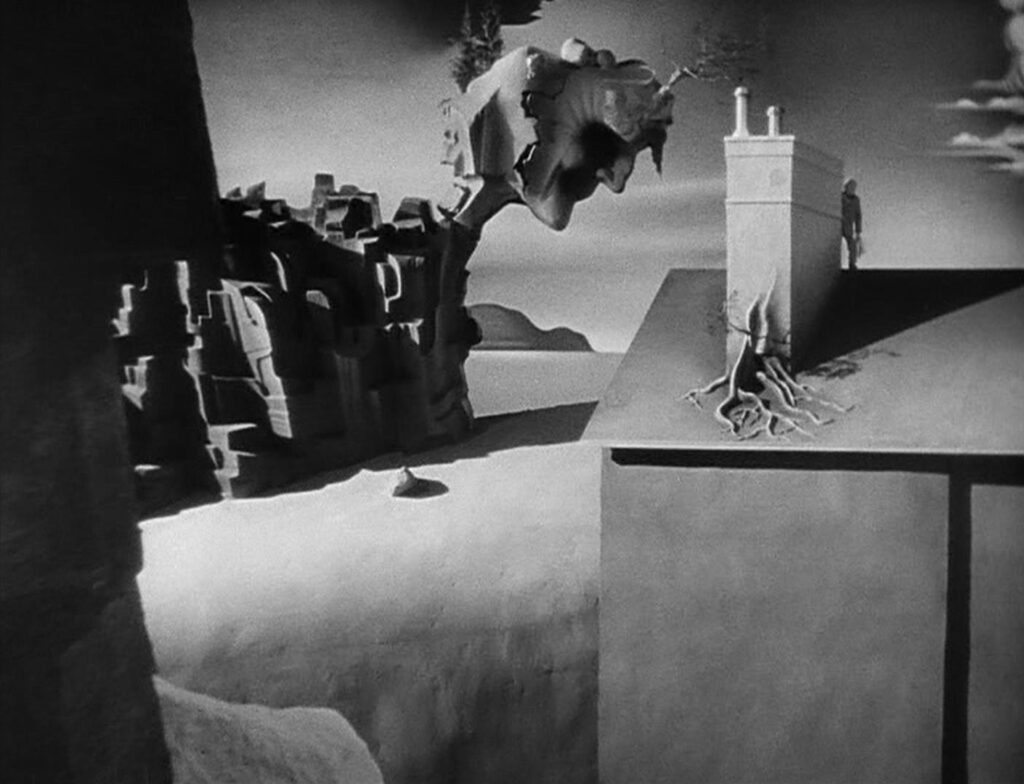
Spellbound
1945, directed by Alfred Hitchcock
Spellbound was released less than two months after the formal end of World War II. After years of deprivation and trauma the United States was ready for emotional healing, and Spellbound is a story of psychological recovery. Audiences welcomed it at the box office, placing its ticket sales in the year’s top ten nationwide.
Alfred Hitchcock must have sensed that the time was right to come open with his interest in Freud. He had given pivotal roles to psychoanalytic theory before, putting Elektra complexes in The Lady Vanishes and Shadow of a Doubt, but these were hidden from the average viewer. Freud’s ideas would influence Hitchcock for the rest of his career, though only in Psycho and Marnie are they as overt as in Spellbound. By 1945 Freudian psychology was well established in European and American clinics, but his theories had not yet achieved household renown. Spellbound introduced Freud’s ideas to popular awareness with appropriate gentleness, focusing on digestible concepts like dream analysis and repression of memories, while steering clear of infantile sexuality except when a policeman at Dr. Brulov’s house tells his partner that their chief called him a “mama’s boy”.
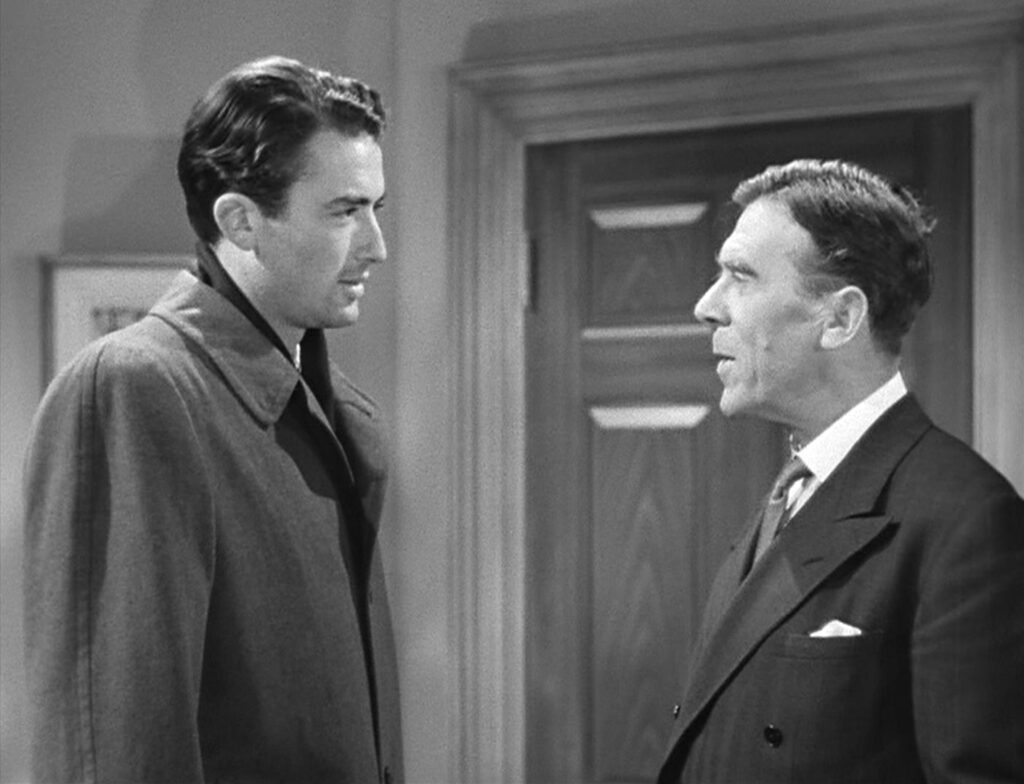
The movie opens with a scrolling text describing the science of psychoanalysis. “The analyst,” according to this preface, “seeks only to induce the patient to talk about his hidden problems, to open the locked doors of his mind.” Behind these words is a large white door, the portal to Green Manors, the clinic in Vermont where much of the film will be set. This double reference to doors hints at the recurring motif which – like the rings in Shadow of a Doubt – will point to the film’s central idea.
Spellbound is full of doors opening and closing. At every opportunity characters enter or exit through doors, especially at Green Manors. The clinic is a place for healing, but it’s also a dysfunctional institution full of rivalries and ill intentions. Its director Dr. Murchison is a professional failure who murdered his replacement in a fit of jealousy. All the closed doors make Green Manors a correlative for a dysfunctional mind, compartmentalized like a sick patient’s brain.
Gregory Peck plays the ersatz Dr. Edwardes, an amnesiac whose real name turns out to be John Ballantyne, though for much of the movie he’s simply identified as “J.B.” The image of a mind partitioned by closed doors is an apt description for amnesia, which locks memories out of sight. J.B. is an amnesiac twice over. Stunned by Dr. Edwardes’ murder on the ski slope, he has forgotten most of his past including his own identity; but even before the murder he had lived with a partial amnesia, having forgotten his brother’s accidental death on a fencepost. His vague sense of guilt for that forgotten childhood incident turns into an acute sense of guilt for Dr. Edwardes’ death. The movie might take liberties with plausibility, but through J.B.’s case history it illustrates the dynamics of the Freudian unconscious for a wide audience.
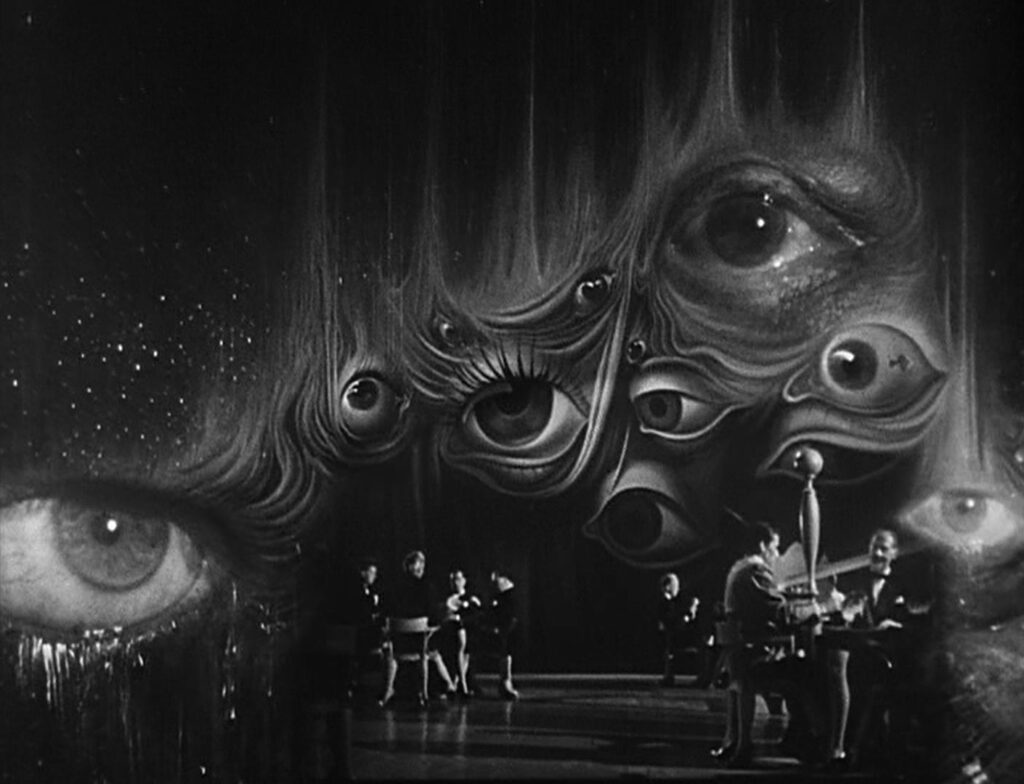
Most of this, so far, is fairly obvious, and with the addition of surreal dream sequences designed by Salvador Dalí it makes for a suspenseful plot that satisfies Hitchcock’s goal of popularizing Freud. It’s not enough however to make Spellbound an enduring classic, and audiences today probably find it dated – both by the lesson in psychology and by the overt sexism toward Ingrid Bergman’s character, Dr. Constance Petersen, which seems to pass unchallenged. It would seem that her role is merely a convenience, providing both a doctor and a romantic partner for J.B.
In a Hitchcock movie however, as with most great directors, the obvious mode of viewing is not necessarily the most penetrating. If we take J.B. to be the main character we’re left with a dated textbook of psychology, but if we choose to look at Spellbound as Dr. Petersen’s story it becomes a different movie altogether. We know that doors are an important clue, and that closed doors are a metaphor for amnesia, but the most memorable doors in Spellbound are placed distinctly in Constance Petersen’s mind, superimposed over her closing eyes during the couple’s first kiss. To the swelling music of Miklós Rósza, the kiss dissolves into a series of four successive doors opening by themselves, turning a row of sealed rooms into an open passage – a visual correlative for a mind opening up.
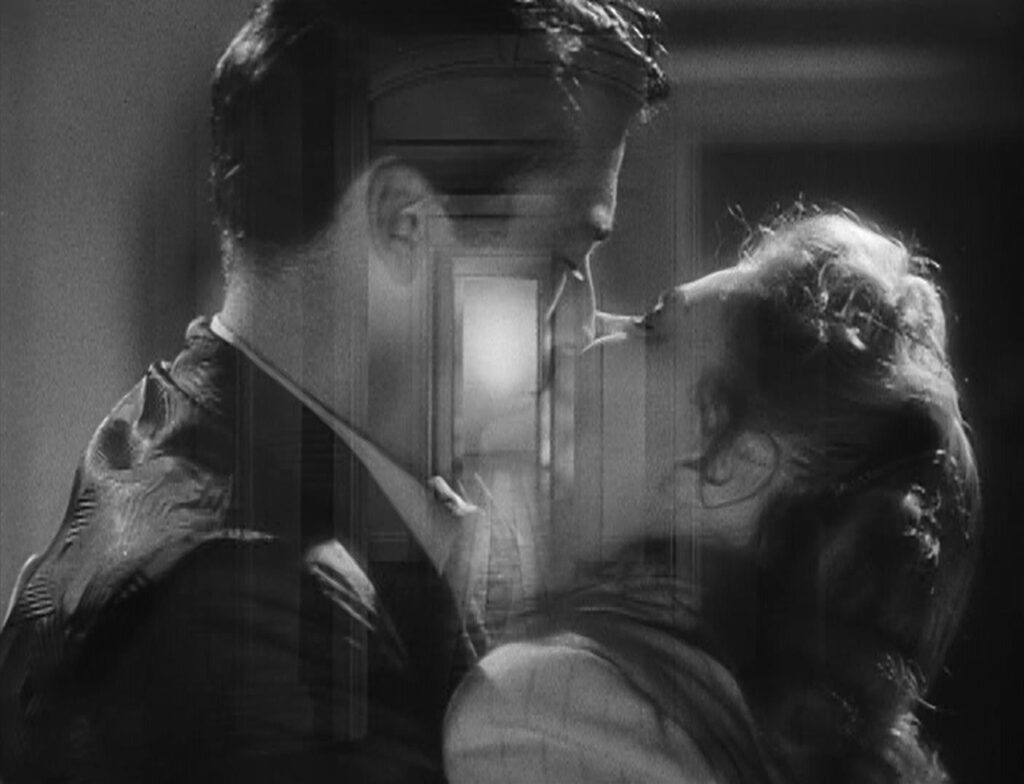
The idea that the virginal Dr. Petersen experiences new territories of sexuality in this simple kiss may seem not only dated, but also to accord with Dr. Fleurot’s insulting description of her as a “human glacier” now acting like a love-struck schoolgirl. Spellbound does not take Dr. Fleurot’s side, though. Constance Petersen may be virginal, but the sexist position would be to say that there’s anything wrong with that. The doors in her mind indicate that she has greater claim than J.B. to being the leading character, that her development counts for more than his relatively simple cure. It’s she after all who solves both the mystery of J.B.’s past and the murder case. By the end, at least if we appreciate what’s happened, it’s very much her movie.
J.B. has his share of trauma to overcome, but Constance Petersen’s struggles are more immediate, more relatable, and probably more difficult. She endures a long chain of embarrassing and humiliating situations, finally discovering her own power in a scene that showcases Bergman’s rare acting ability.
Her trials begin when nymphomaniac patient Mary rebels against her treatment, and Dr. Petersen must handle her with all the professional tolerance required of a good psychoanalyst. When Mary leaves, Dr. Fleurot comes in and belittles her with unwelcome sexual passes. In the dining hall Fleurot introduces her to J.B. as a “frustrated gymnast”. J.B. snaps at her when she draws lines in the tablecloth with a fork, and in the next scene Fleurot teases her about her attraction to J.B., which surely increases her embarrassment when J.B. invites her for a walk outdoors. She accepts, but their conversation about love again tests her composure. She trips on a wire fence, and at the scene’s romantic climax the conversation lands awkwardly on the word “liverwurst”, which she delivers with so much spirit that it foreshadows the inner strength she will display later when it’s most needed.
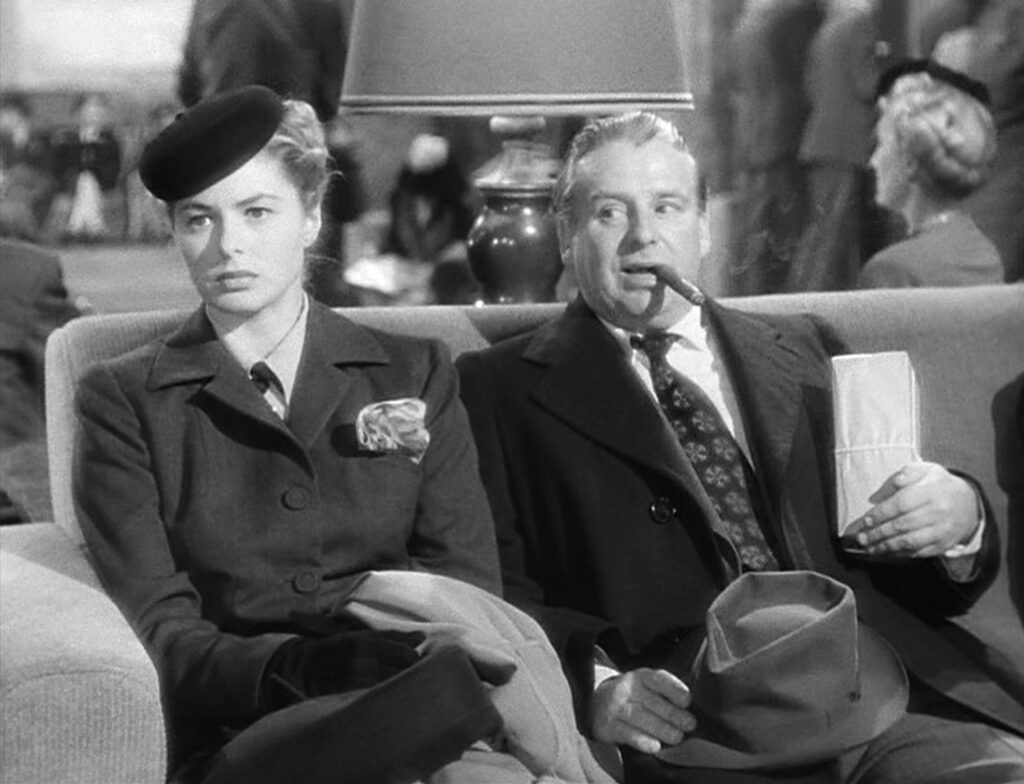
Back in the dining hall the doctors gossip about her. When she arrives they stare at her in unison, and Fleurot picks leaves from her hair as if she were a child. Calling on J.B. late at night she makes awkward excuses, and the next morning the police and her colleagues interrogate her, catching her in her nightgown as she feels compelled to make excuses for J.B. She is further embarrassed by J.B.’s letter on the floor and by the way Murchison picks it up and hands it to her. In the library Fleurot insults her again and strains her nerves by predicting J.B.’s suicide. In New York City a stranger hits on her in the hotel lobby, then the house detective plays the hero and rescues her, claiming to be “a kind of a psychologist” while she, a real psychologist, must pretend to be a schoolteacher. At Grand Central Station she makes excuses for J.B. to a solicitous police officer then endures J.B.’s joke about crazy analysts. On the train he rewards her for her help by calling her a “phony King Solomon” and saying “If there’s anything I hate it’s a smug woman.” Dr. Brulov puts her down with sexist condescension and discourages her efforts, and in court she pleads in vain for her lover. Finally when she confronts Dr. Murchison he points a revolver at her, calls her “a rather stupid woman”, and mocks her “imbecilic devotion” to her patient.
All of these situations put Dr. Petersen through a gauntlet of embarrassments, testing her emotional fortitude. She passes admirably, keeping her poise through every trial. It’s a testament not only to Petersen but also to Ingrid Bergman’s acting skills that both character and actress maintain their composure so well, and in her confrontation with Dr. Murchison she needs every bit of the strength she has so capably demonstrated. Precisely when he appears to have checkmated her she turns on him with supreme confidence, using her mastery of human nature and the voice of a great actress to talk him out of pulling the trigger. What she achieves is nothing less than hypnotizing her own boss. Once he realizes how soundly he has been defeated, he turns the revolver on himself, and the screen flashes bright red.
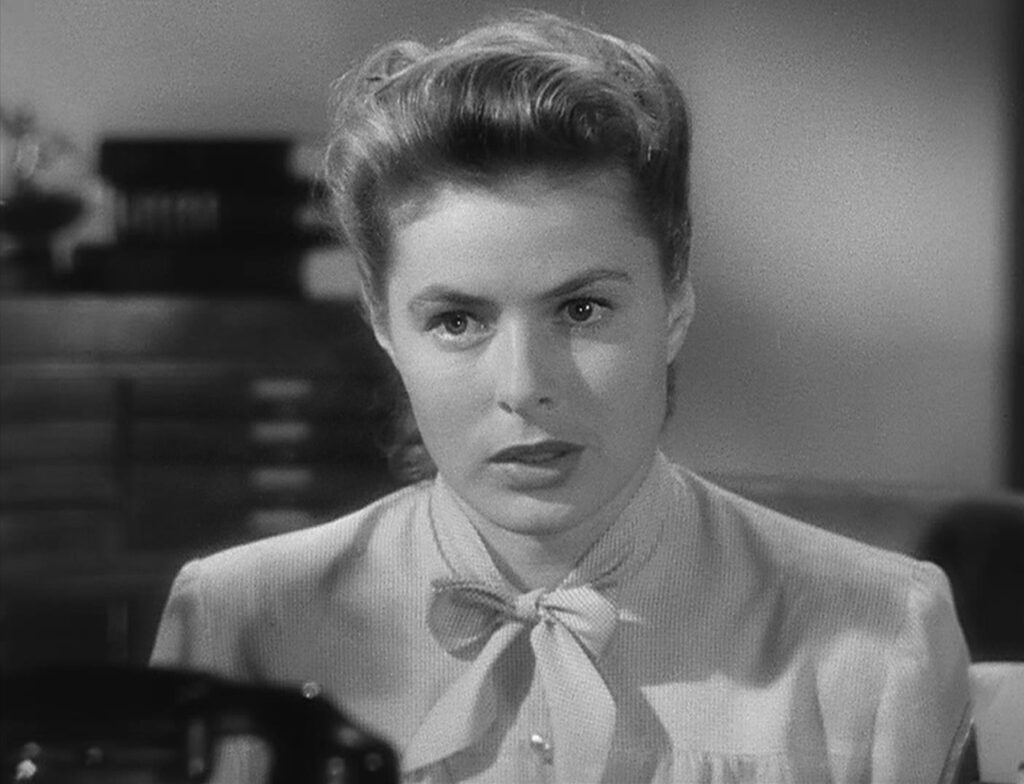
By the end both Petersen and Ballantyne have gone through processes akin to psychoanalysis. The movie has interwoven their stories seamlessly, his in the form of a clinical case study and hers as the evolution of a great psychoanalyst. The doors in both of their minds have opened, freeing them not only to love each other but also to function at the top of their talents.
CONNECTIONS:
Rebecca – Lead female character summons inner strength to stand up to the villain
Ladies in Retirement – Murderer argues that it’s easier to kill a second time
Green for Danger – Hospital setting as a metaphor for national healing after WWII; guilt revealed early
Sunset Boulevard – Ambiguity as to which of the two leads is the main character
Rear Window – Falling as a symbolic release from childhood trauma, opening a new point of view
Wild Strawberries – Surreal dream sequences
Chase a Crooked Shadow – Actress put through the paces of her character to reveal an extraordinary dignity
Vertigo – Literal vs. figurative amnesia; Empire State Hotel / Empire Hotel; Ballantyne / Scottie (both allude to Scotch whiskey)
Pickpocket – Recurring images of doors representing a closed-off mental or social state
Marnie – Psychoanalytic story culminating in recovery of traumatic memories; symptoms associated with a single color (white in Spellbound, red in Marnie); showcase for Freudian technique
Mirage – Gregory Peck as an amnesiac
Persona – Ambiguity as to which of the two leads is the main character
Where Is My Friend’s Home? – Doors as a repeated motif with metaphorical significance